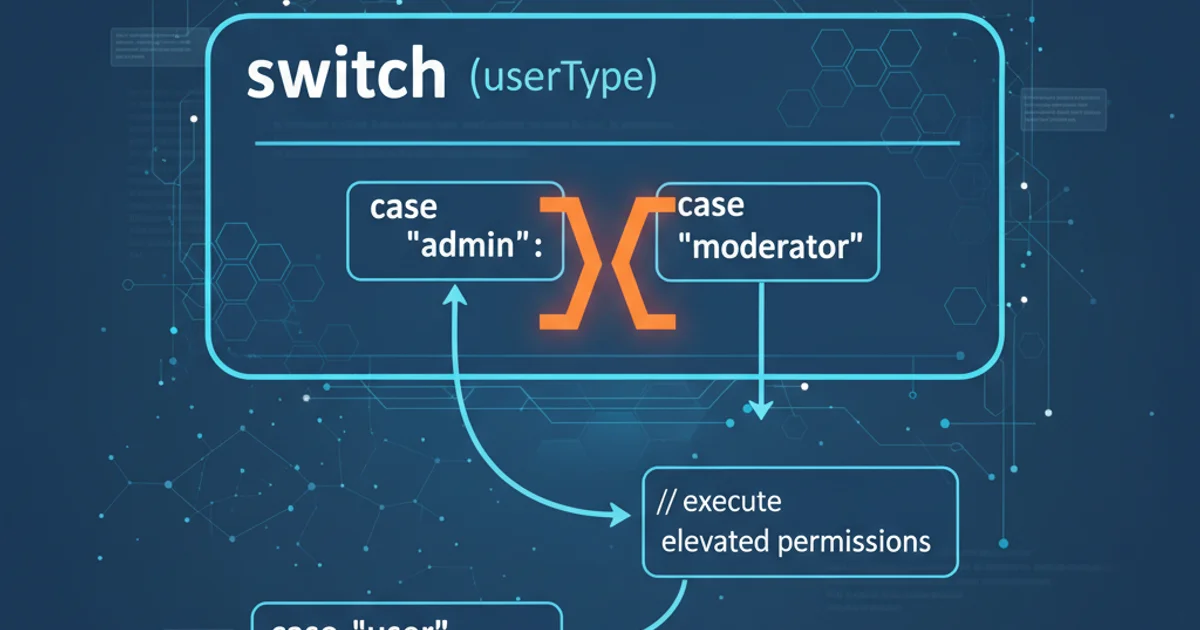OR operator in switch-case?
Categories:
Leveraging the OR Operator in Java Switch-Case Statements

Explore how to effectively use the OR operator in Java's switch-case statements, from traditional approaches to modern Java 12+ enhancements, for cleaner and more concise code.
The switch statement in Java is a powerful control flow construct that allows a program to execute different blocks of code based on the value of an expression. Traditionally, handling multiple cases that should execute the same code block required a fall-through mechanism. However, with modern Java versions, specifically Java 12 and later, the switch expression and enhanced switch statement introduced a more elegant way to combine cases using a comma-separated list, effectively acting as an OR operator.
Traditional Approach: Fall-Through in Switch Statements
Before Java 12, if you wanted multiple case labels to execute the same code, you would rely on the 'fall-through' behavior. This meant omitting the break statement for preceding cases, allowing execution to continue into the next case block until a break was encountered. While functional, this approach could sometimes lead to subtle bugs if a break was accidentally omitted where it was intended, making the code less readable and more prone to errors.
public class OldSwitchExample {
public static void main(String[] args) {
int dayOfWeek = 3;
String dayType;
switch (dayOfWeek) {
case 1:
case 7:
dayType = "Weekend";
break;
case 2:
case 3:
case 4:
case 5:
case 6:
dayType = "Weekday";
break;
default:
dayType = "Invalid day";
}
System.out.println("Day " + dayOfWeek + " is a " + dayType);
}
}
Traditional Java switch statement using fall-through for multiple cases.
break statement can lead to unintended execution of subsequent case blocks, resulting in logical errors that are hard to debug.Modern Approach: Comma-Separated Labels (Java 12+)
Java 12 introduced an enhanced switch statement and switch expression, which significantly improved readability and safety. One of the key features is the ability to specify multiple case labels for a single block of code using a comma-separated list. This directly addresses the need for an 'OR' condition within switch statements, making the code much cleaner and less susceptible to fall-through errors.
public class NewSwitchExample {
public static void main(String[] args) {
int dayOfWeek = 3;
String dayType;
switch (dayOfWeek) {
case 1, 7 -> dayType = "Weekend";
case 2, 3, 4, 5, 6 -> dayType = "Weekday";
default -> dayType = "Invalid day";
}
System.out.println("Day " + dayOfWeek + " is a " + dayType);
// As a switch expression (Java 14+)
String dayCategory = switch (dayOfWeek) {
case 1, 7 -> "Weekend";
case 2, 3, 4, 5, 6 -> "Weekday";
default -> "Invalid day";
};
System.out.println("Day " + dayOfWeek + " category: " + dayCategory);
}
}
Modern Java switch statement and expression using comma-separated labels.
flowchart TD
A[Start: Evaluate dayOfWeek]
A --> B{dayOfWeek}
B -- 1 or 7 --> C[Assign "Weekend"]
B -- 2, 3, 4, 5, 6 --> D[Assign "Weekday"]
B -- default --> E[Assign "Invalid day"]
C --> F[End]
D --> F
E --> FFlowchart illustrating the logic of a modern switch statement with OR conditions.
Benefits of the Modern Approach
The enhanced switch statement and switch expression offer several advantages:
- Improved Readability: The comma-separated list of
caselabels clearly indicates that these cases share the same logic, making the code easier to understand at a glance. - Reduced Errors: By eliminating the need for explicit
breakstatements in these grouped cases, the risk of accidental fall-through bugs is significantly reduced. - Conciseness: The
->syntax (arrow operator) allows for more compact code, especially when the case body is a single expression or statement. - Switch Expressions: When used as an expression,
switchcan directly return a value, further simplifying code and making it more functional. This is particularly useful for assigning values to variables based on different conditions.
switch statement or switch expression with comma-separated labels when working with Java 12 or newer. It leads to safer, more readable, and more concise code compared to the traditional fall-through mechanism.